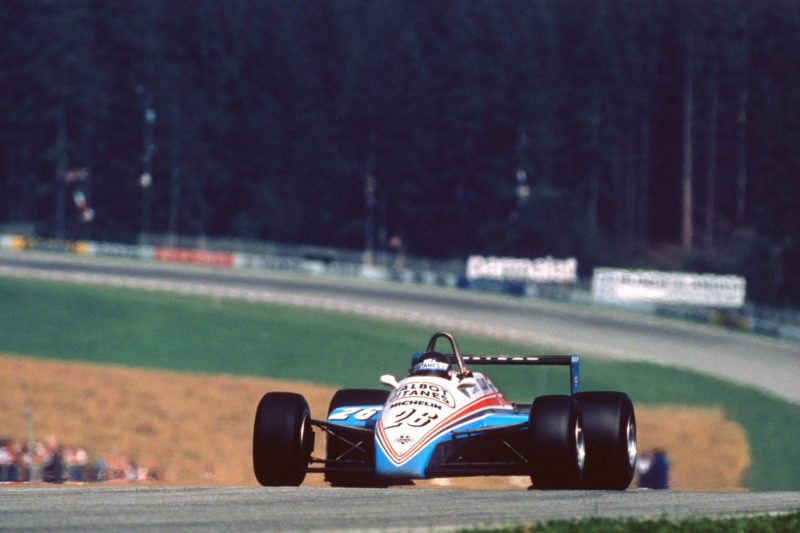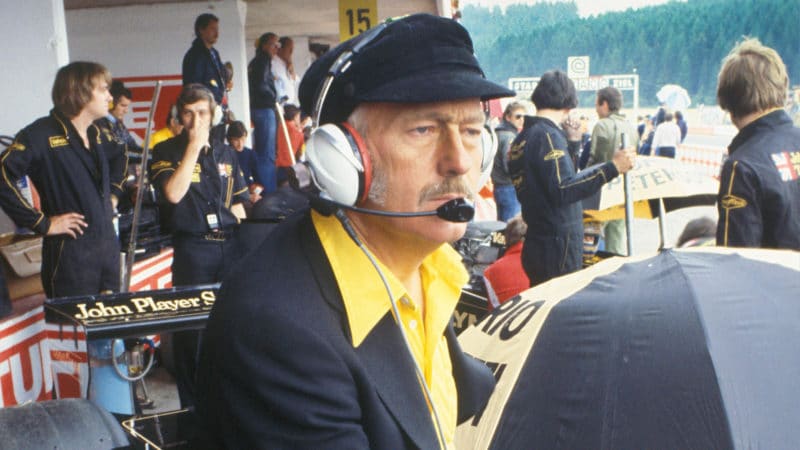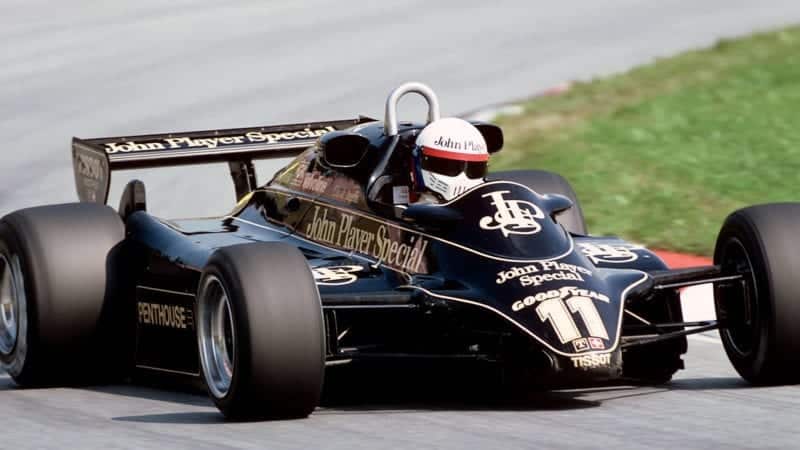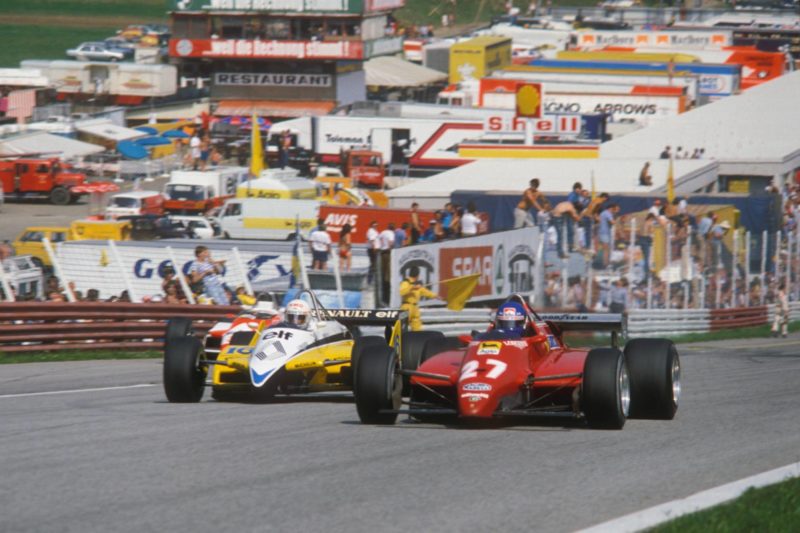In fact, the biggest worry for the de Angelis at this point was Rosberg behind, who was rapidly reducing a 10-second deficit after being free of Piquet’s Brabham. Prost who was on for a simple victory, but then it all went wrong with five laps to go after his Renault‘s turbos failed and ignited.
Now the win was truly on for new leader de Angelis, but the Italian had a very fast Rosberg on his tail, who was also chasing a maiden grand prix victory at the time. At the start of the final lap, just 1.6 seconds separated the pair.
Rosberg put in a blistering last tour, and was right on the race leader’s gearbox heading into the last turn, as de Angelis defended the inside line but slid wide on the exit of the corner, allowing the Finnish driver to dive down the inside.
However, it wasn’t enough – the Lotus man claimed the win by 0.05secs.
De Angelis emphasised just how tight it was: “Unfortunately Keke was very, very quick,” he told Murray Walker after the race. “I couldn’t push more because I was worried about my tyres.”
Despite how close it was at the front, over a lap then separated them to the rest of the field with Jacques Laffite [pictured] in third
A first Hethel win in three years, Chapman also spoke of his hopes for ’83, as Lotus had just signed to use turbo Renault engines in the coming season.
The Lotus boss would never see those plans come to fruition though – he suffered a fatal heart attack the following December.

Austria represented the final Lotus win Chapman would see
De Angelis, known to be a sensitive and charming character, “Probably never felt quite the same about Lotus again,” said Nigel Roebuck in 2006.
For the 24-year-old Italian, Austria should have represented the first of a number of wins in what look to be a promising career.
However, he would only take one more victory, at Imola in ’85, before he was tragically killed the following year in an accident at Paul Ricard whilst testing for Brabham.
Forty years after this glorious win though, Chapman and de Angelis still shine brightly as they ever did.




